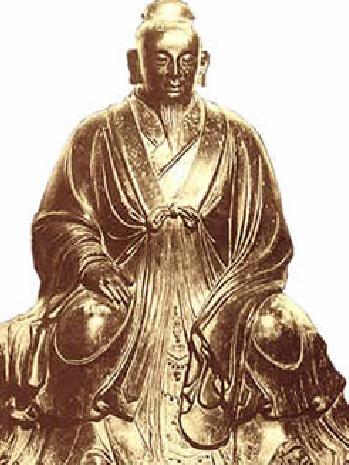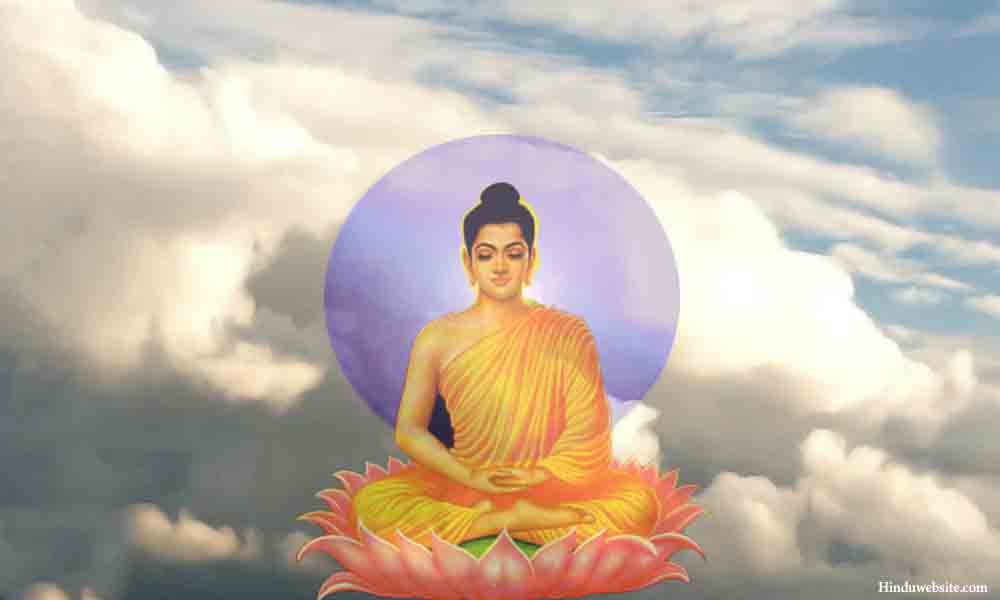TREATISE OF ZHANG SAN FENG AND AHA MOMENTS

Zhang San Feng
Question
I have read the Treatise of Zhang San Feng many times. It is a very profound and inspiring text. Every time I read it I realise something new. Thank you for making it accessible to all of us.
Did you have any realisations or Aha moments when translating it? if so, could please share them with us?
I would also have another question if I may ask more than one:
Buddhists speak about following "The Middle Way" and Taoists about attaining "Yin-Yang Harmony". I was wondering what the differences and similarities exist between both of them. Do you think that ultimately "The Middle Way" and "Yin-Yang Harmony" aim to achieve the same Goal?
Santi
Answer
The Treatise of Zhang San Feng is indeed profound and inspiring. Those who practice not only Taijiquan but any martial art should read it. Understandably, not many martial arts follow the treatise, nor even have heard about it.
The Treatise of Zhang San Feng was written in classical Chinese, and therefore presents many problems for modern readers. Even modern Chinese scholars may not know classical Chinese well.
But this is not its crucial problem. There are three crucial problems. Classics were written for posterity, and for those who practiced the arts. Background information was normally not mentioned. Thirdly, intending practitioners who are lucky to have a classic, might not be able to perform the given information.
It is important to realize that classics were not meant as teaching manuals. Those who have not practiced the art, or similar arts, would not know how to apply the instructions in a classic.
For example, in rolling bamboo in the Art of Iron Arm, a practitioner must roll a bamboo in a relaxed manner. Most intending practitioners would tense their arms, and this is wrong.
Secondly, background information is normally not given. In the Art of Iron Arm, a practitioner must condition his arm if he uses an external method, or has practiced appropriate chi kung exercises if he uses an internal method, before rolling a bamboo.
Thirdly, in rolling bamboo a practitioner lets his chi flow to his arm. Many practitioners would not know how to implement the instruction even when they know the instruction.
I shall briefly explain what this Treatise of Zhang San Feng is. Those who want details should refer to my webpage Taijiquan Treatise of Zhang San Feng – Overview.
The full name of the Treatise when translated into English is "Focusing Spirit Accumulating Energy Treatise in Grand Ultimate Practice". “Focusing Spirit” is spiritual cultivation. “Accumulating Energy” is energy training. “Grand Ultivate Practice” is Taijiquan. Hence, in modern English the name of the Treatise is “Treatise of Spiritual Cultivation and Energy Training in the Practice of Taijiquan”.
It should be known that “Taijiquan” is a modern term. At the time of Zhang San Feng it was known as Shaolin Kungfu.
Zhang San Feng was the first person to incorporate kungfu training, spiritual cultivation and energy training into one unity. He was regarded as the First Patriarch of the internal arts. Hence, when we practice Taijiquan, Taijiquan as taught by Zhang San Feng, it is kungfu, chi kung (or energy training) and meditation (or spiritual cultivation) at the same time.
Taiji, or the Cosmos, originates from Wuji, or the Great Void, and returns to Wuji. The Cosmos is symbolized by yin and yang, which is being quiescent and dynamic. The interaction of yin and yang brings about myriad things in the phenomenal world. These countless myriad things, however, are not different from the undifferentiated spread of energy. It is a matter of spiritual perception.
The essence of the teaching on Taijiquan is spirit and energy. If one misses spirit and energy, he has missed the essence of Taijiquan.
In Taijiquan there are stillness and movement. Stillness and movement are not separated, they are integrated. Before any movement in Taijiquan there is intention. There are 72 patterns of Taijiquan which can be classified into 13 techniques, according to the principles of Bagua and Wuxing.
In the practice of Taijiquan you must empty your mind of all thoughts and not tense any muscles. You must loosen your waist, and apply the principle of false-real, the principle of sinking and pressing, and the principle of using intention and not using strength. The top and bottom part of your body and movement must be co-ordinated. The internal and external aspects of training must be integrated. All the patterns must be performed continuously in one gentle, graceful flow without any break. In your movement there must be stillness, and in stillness there must be movement. These are the Ten Essentials in the art of Taijiquan. This is the "Gate of No Other Way". This is fundamental to becoming students of our school to practice Taijiquan correctly.
There were many realizations but, as far as I can remember, there were no Aha moments when translating the Treatise. These Aha moments occurred earlier when teaching Taijiquan. The translation was an attempt to convey the essence of Zhang San Foong to our students.
When teaching Taijiquan, the many realizations and Aha moments happened spontaneously. Sometimes there might be realizations and no Aha moments. Here were some of the realizations and Aha moments when they occurred spontaneously.
I realized with an Aha moment that when Taijiquan was performed fast it was like Shaolin Kungfu, and when Shaolin Kungfu was performed slowly it was like Taijiquan. At that time Wudang Taijiquan and Chen Style Taijiquan were relatively unknown, and it was mainly Yang Style Taijiquan. It occurred at the time when my fourth sifu, Sifu Choe Hoong Choy, showed me how to generated internal force using Siu Lin Tou. Or it might have occurred earlier when my third sifu, Sifu Ho Fatt Nam, demonstrated to me how he performed slowly the Shaolin Pakua Set when he taught a king of a state in Malaysia.
Later when I was teaching an intensive course, I believe in 2006, I realized and had an Aha moment that if we performed Shaolin Kungfu slowly like Taijiquan, not only we could detail mistakes more easily, but also we could round off corners and make our movements smooth.
I had a realization and a Aha moment when teaching a Taijiquan course that when we performed the movements slowly and gracefully, we could develop internal force. Later I called this internal force “flowing force”, to differentiate it from the “consolidated force” we developed in Iron Wire or Triple Stretch.
Buddhists speak about following the middle way, and Taoists about attaining yin-yang harmony. There are differences as well as similarities between these two principles.
The middle way is the way between two extremes, that of self-mortification and sensual indulgence. Some Indian monks tortured themselves like starving, wearing torn clothing, and sleeping on beds of thorns, hoping that their minds would be liberated from the shackles of the body. Sensual indulgence refers to enjoyment derived from the senses, like Roman emperors tickling their tongue to vomit so that they could eat more, or Chinese emperors had a thousand wives so that they could enjoy sex. The Buddha proposes the Eight-Fold Path to attain the middle way.
Yin-yang harmony refers to a harmony of two opposite yet complimentary aspects of reality, like being successful in both his private and his social life, and having health as well as vitality. If a person is a good husband but fails in his social life, or is not sick in hospital but lacks vitality in his work and play, he does not have yin-yang harmony. Yin-yang harmony is particularly important in Taijiquan. We practice Taijiquan, for example, not just for health but also for combat efficiency, not just being slow and graceful but also being fast and forceful.
The similarities are that both principles enrich life. It is not advisable to mortify oneself or to indulge excessively in the senses. Hence the middle way is advocated. It is not advisable just to have health and no vitality, or to be successful in private life but not in social life. Hence yin-yang harmony is advocated. In this way the middle way and yin-yang harmony aim to achieve the same goal

The Middle Way, picture taken from http://www.hinduwebsite.com/buddhism/middlepath.asp
The questions and answers are reproduced from the thread Questions to Grandmaster on Wudang Kungfu/Taijiquan & Zhang San Feng in the Shaolin Wahnam Discussion Forum.
LINKS
